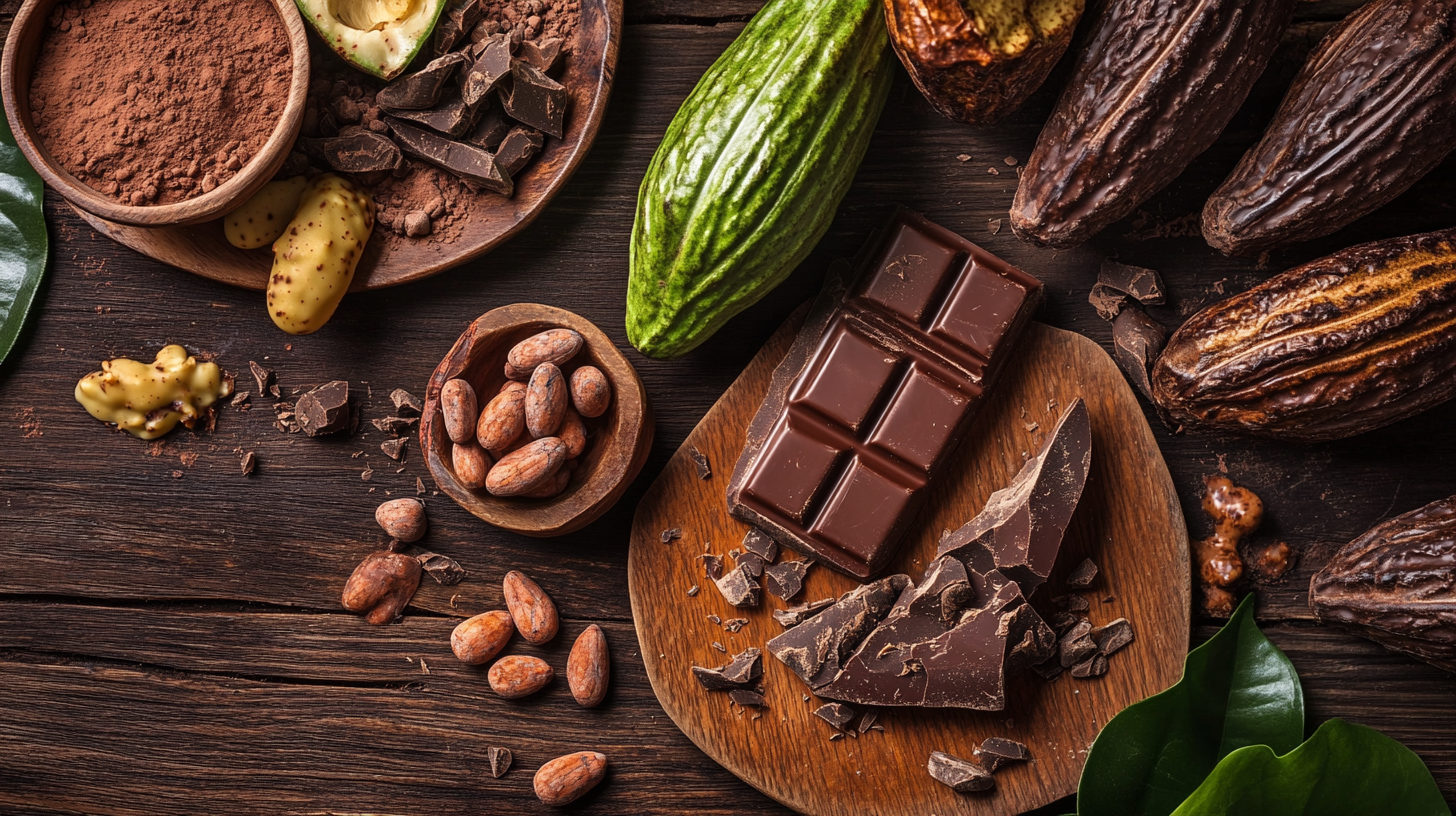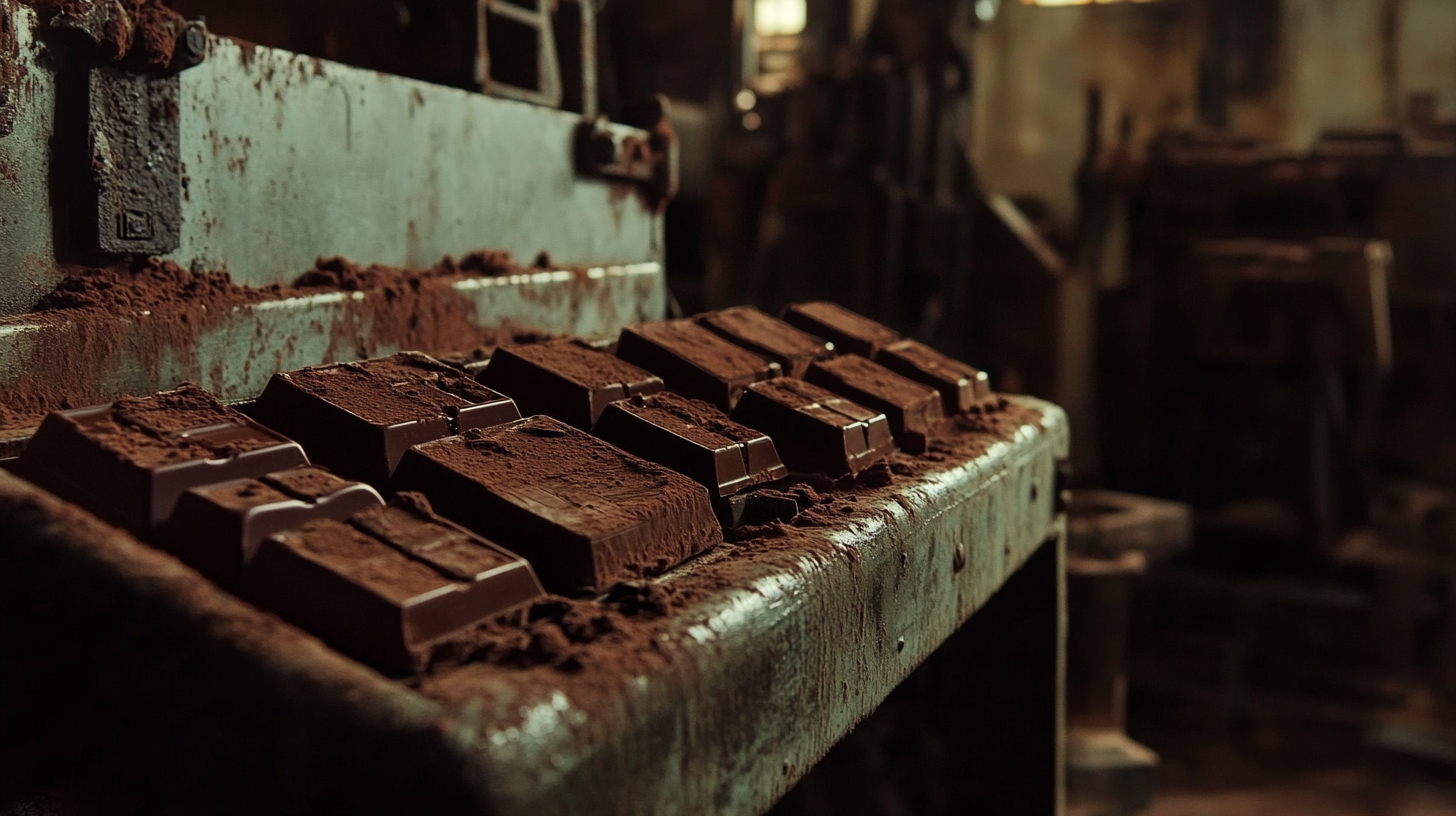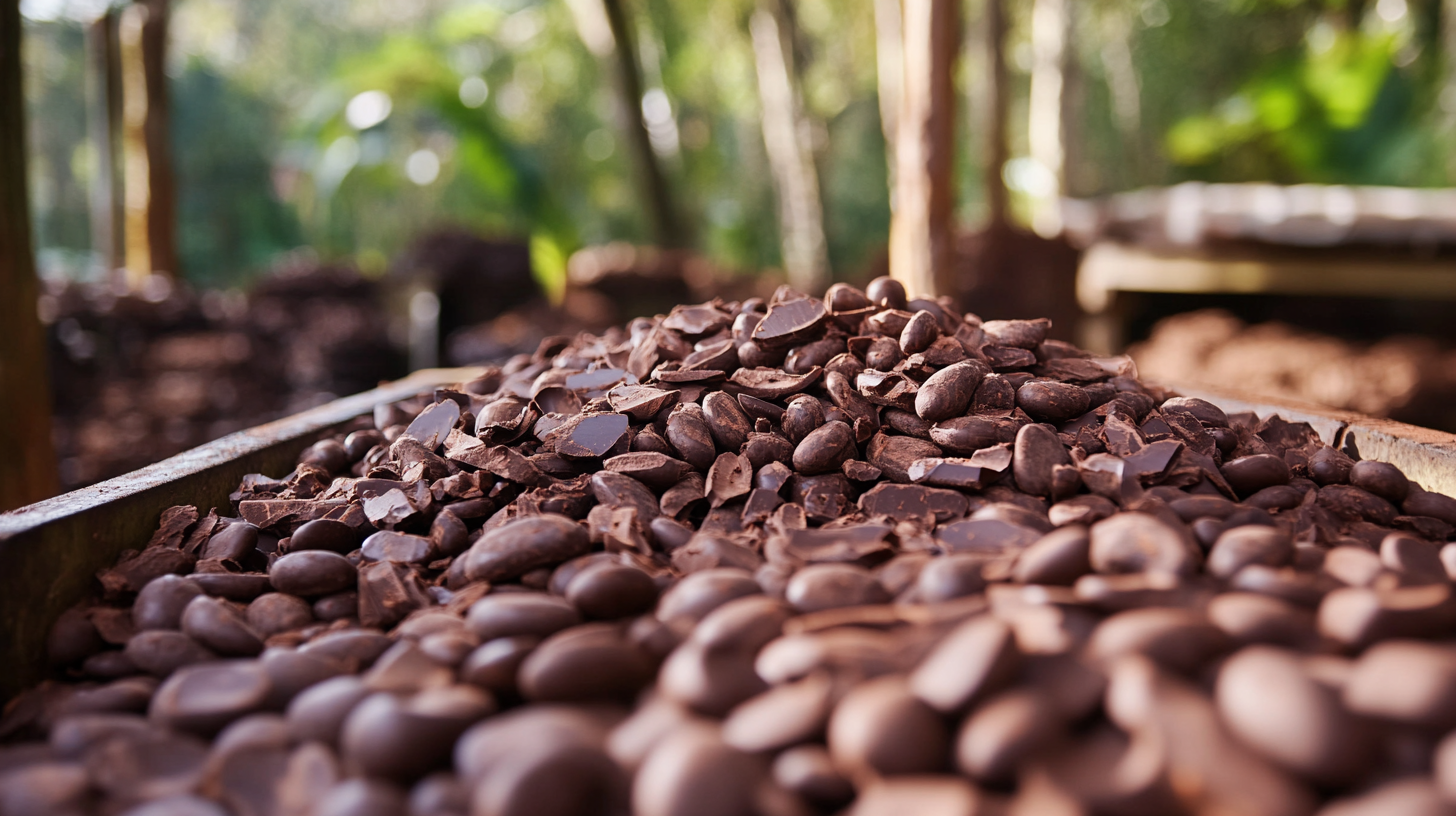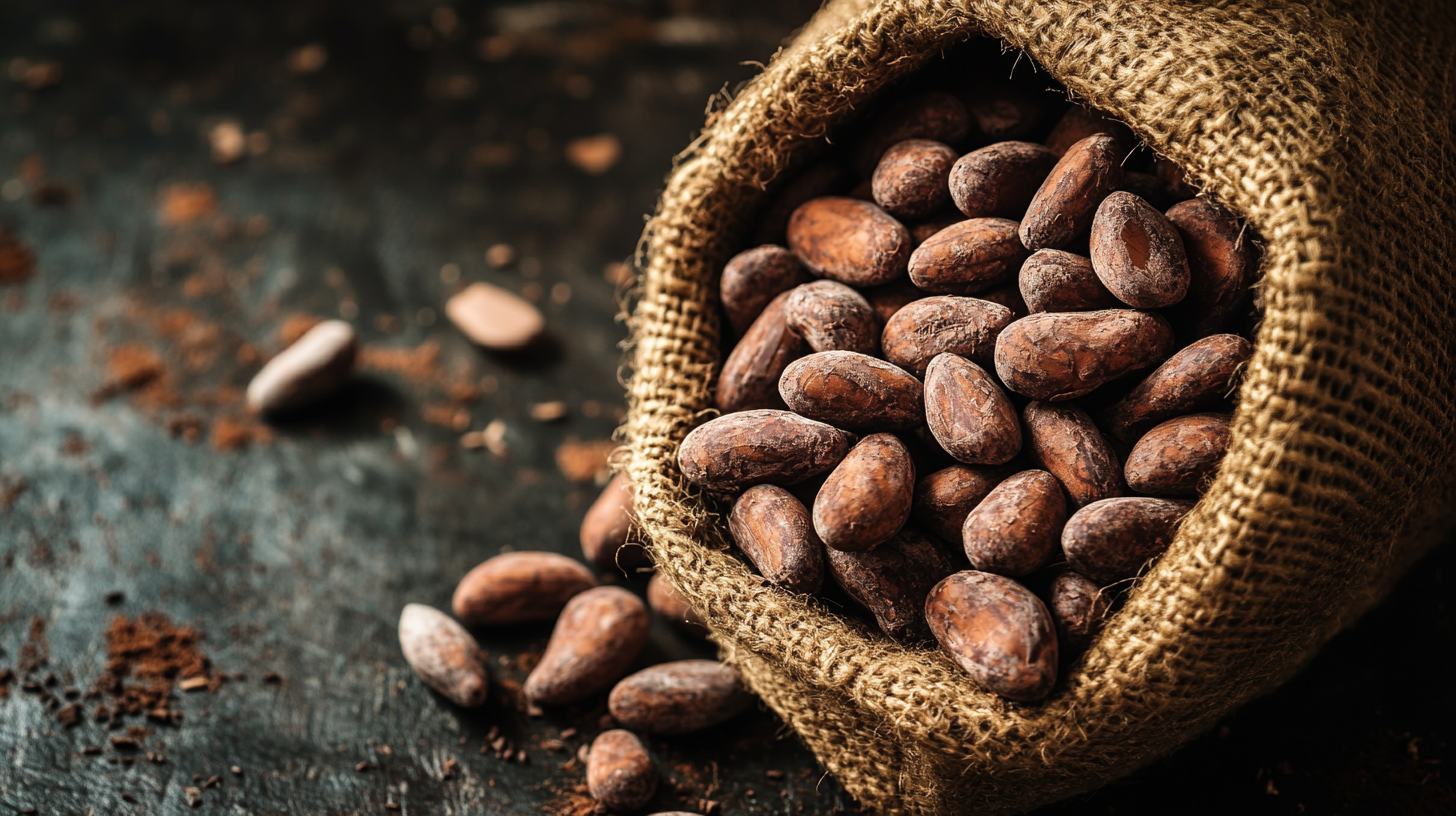The global chocolate market has been experiencing significant growth, driven by increasing consumer demand for premium and artisanal products. According to a report by Statista, the global chocolate industry is projected to reach approximately USD 161 billion by 2024, with a CAGR of 5.2% over the next several years. As companies strive to meet this burgeoning demand, the importance of sourcing high-quality macchine lavorazione cioccolato (chocolate processing machines) becomes paramount. These machines play a crucial role in maintaining the quality and consistency of the final product, allowing manufacturers to deliver rich flavors and textures that attract customers.
To stay competitive in this lucrative market, chocolate producers must focus on sourcing the best machinery available worldwide. Investments in advanced macchine lavorazione cioccolato not only enhance production efficiency but also support innovative chocolate-making techniques that can lead to unique offerings in an ever-evolving consumer landscape. Reports indicate that automation and precision engineering in chocolate machinery are essential for producing high-quality products while minimizing waste and optimizing operational costs. As we explore the secrets to sourcing the best chocolate processing machines, it becomes clear that the right equipment is a game-changer for both established manufacturers and newcomers to the industry.

Quality chocolate processing machines are the backbone of any chocolate production facility, directly influencing the taste, texture, and overall quality of the final product. Understanding the importance of these machines means recognizing that they are not just equipment; they are vital tools that can make or break a confectionery business. High-quality machines ensure consistent performance, which is critical in maintaining the integrity of the chocolate. Moreover, investing in superior machinery can significantly reduce waste and increase efficiency, leading to a better bottom line. When sourcing chocolate processing machines, it’s essential to consider factors such as the materials used, the technology implemented, and the brand’s reputation. Machines that are built with durable materials and innovative technology can withstand the rigorous demands of chocolate production while delivering unparalleled results. Some modern chocolate machines even feature advanced automation, allowing for precise control over temperature, mixing, and tempering processes, which are crucial for producing high-quality chocolate. Additionally, the sourcing process shouldn’t be rushed. Engaging with trusted suppliers and manufacturers who specialize in chocolate machinery can provide valuable insights and recommendations tailored to specific production needs. Attending industry trade shows and expos can also facilitate connections with leading brands, enabling producers to make informed decisions. By understanding the significance of quality chocolate processing machines, businesses can set themselves on a path to greatness, ensuring that every batch of chocolate reaches its full potential.

When it comes to sourcing the best chocolate processing equipment, it’s crucial to focus on key features that can make a significant impact on production efficiency and product quality. First and foremost, the technology integrated into the machinery should rank high on your checklist. Innovations such as 3D printing are revolutionizing food production, allowing for customization in chocolate shapes and fillings, enhancing both creative possibilities and operational efficiency.
Another critical aspect is sustainability. As more manufacturers like those in Ecuador and Uganda adopt sustainable farming practices, choosing equipment that supports eco-friendly operations is essential. This includes machines designed for energy efficiency and those that optimize the use of raw materials, ensuring high-quality output while minimizing waste. Such features not only align with global trends toward sustainable production but also appeal to increasingly eco-conscious consumers.
Additionally, consider the versatility of the processing equipment. The ability to produce a diverse range of products, from filled chocolate bars to truffles, can provide a competitive edge. Companies are also investing in local processing capabilities to meet growing demand and stimulate economic growth in regions like Africa. This trend highlights the importance of machinery that can adapt to various products without significant downtime. In this evolving industry, having the right equipment with these key features is essential for success.

When looking for the best chocolate processing machines in the global market, evaluating different suppliers is crucial. The chocolate processing equipment market is projected to grow at a CAGR of nearly 7% from 2021 to 2026, primarily driven by the increasing demand for high-quality chocolates. According to a report from Mordor Intelligence, the market size for chocolate processing equipment was valued at approximately $1.37 billion in 2020, and this figure is expected to reach around $2.15 billion by 2026. This rapid growth underscores the importance of sourcing the right machinery to meet production demands and ensure quality.
When assessing suppliers, it's essential to consider their technological advancements, warranty offerings, and customer service. Leading suppliers like Bühler AG and Netzsch offer state-of-the-art technology, ensuring efficient energy use and minimized waste. Furthermore, suppliers with a proven track record in the industry often provide valuable insights into equipment customization, which can significantly enhance the production process. A supplier’s commitment to ongoing technological development can also indicate their ability to adapt to market trends and customer needs.
In addition to quality and innovation, geographic location plays a significant role in supplier evaluation. Proximity to supply chains and logistics can facilitate faster delivery times and reduce shipping costs, which are critical factors for manufacturers looking to remain competitive. Additionally, local regulatory compliance and support should be considered when selecting a supplier, as these aspects can impact operational efficiency and overall cost-effectiveness in the chocolate processing sector.

The chocolate industry is undergoing a seismic shift, driven by innovative technologies that are reshaping the landscape of chocolate processing. Modern chocolate processing machines are now equipped with advanced features that not only enhance efficiency but also ensure consistent quality in production. Automation plays a pivotal role, as manufacturers embrace robotics and smart machinery that minimizes human intervention, allowing for precise control over every step of the chocolate-making process.
One of the most groundbreaking developments in chocolate processing is the use of cloud-based technology. This allows manufacturers to monitor production remotely, analyze data in real-time, and make informed decisions to streamline operations. With the ability to adjust parameters on the fly, companies can achieve optimal results while reducing waste and energy consumption. Furthermore, innovations in machine design have led to equipment that is not only more efficient but also more sustainable, addressing environmental concerns that are increasingly important in today’s market.
Additionally, the integration of artificial intelligence has opened new avenues for quality control. AI-powered systems can detect anomalies during production, ensuring that every batch meets the highest standards. This not only elevates the final product but also strengthens a brand's reputation in a competitive marketplace. As the chocolate processing sector continues to evolve, these innovative technologies are set to unlock new potentials and redefine the future of chocolate manufacturing.
Maintaining and upgrading chocolate processing machines is crucial for manufacturers looking to enhance efficiency and product quality. According to a report by Grand View Research, the global chocolate processing equipment market is expected to reach $6.2 billion by 2025, with a compound annual growth rate (CAGR) of 4.2%. This growth underscores the importance of investing in reliable machinery and proper maintenance practices.
Routine maintenance can significantly extend the lifespan of chocolate processing equipment. The National Confectioners Association suggests that manufacturers establish a preventive maintenance schedule that includes regular inspections and cleaning. Implementing predictive maintenance strategies, based on machine data analytics, can further reduce downtime and improve operational efficiency. Adopting these practices can lead to a decrease in breakdowns by as much as 30%, saving both time and costly repairs.
Furthermore, upgrading existing machines can yield substantial benefits. According to a report by Market Research Future, advanced chocolate processing technologies can improve energy efficiency by up to 15%. This not only reduces operational costs but also contributes to sustainability goals within the industry. Leveraging automation and upgrading to energy-efficient models not only enhances productivity but also positions manufacturers favorably in a competitive market. By prioritizing maintenance and embracing technological advancements, chocolate producers can remain at the forefront of industry innovation.
Utilizziamo i cookie per migliorare l'esperienza utente. Per maggiori informazioni, consulta la nostra Cookie Policy.